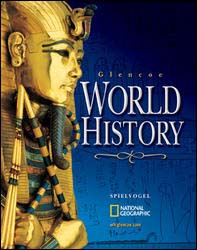Glencoe World HistoryChapter 16:
The East Asian World, 1400–1800Chapter OverviewsThe resourceful Ming emperors restored China to greatness. They were succeeded by the Qing dynasty, which ruled until 1911. Japanese unification began in the sixteenth century. Trade and manufacturing expanded in China and Japan, although both countries kept Europeans at arms length. Although Korea attempted to remain isolated, it fell under Chinese rule. Section 1 China at Its Height
The Mongol dynasty in China was overthrown in 1368 and replaced by the Ming dynasty. Ming emperors extended Chinese rule into Mongolia and central Asia and briefly reconquered Vietnam. They ran an effective centralized bureaucracy and made improvements that restored Chinese greatness. During the mid-fifteenth century, Chinese ships larger than those of Columbus briefly explored as far as East Africa. The arrival of a Portuguese fleet during the early sixteenth century led to an exchange of ideas and introduced Christian missionaries to China. The declining Ming dynasty was replaced by invading Manchus, who formed the Qing dynasty. The Qing lasted until 1911 and produced perhaps China's greatest emperor, Kangxi, who ruled for 61 years. Europeans returned during the eighteenth century, seeking to trade, but by the late eighteenth century, the Qing were restricting trade, and even European contact, with the Chinese. Section 2 Chinese Society and Culture
Improvements in Chinese life led to an increase in population and a growing shortage of land. This led to rural unrest. Manufacturing and trade were increasing steadily, but they were tightly controlled by the government. Commercial capitalism—private business based on profit—did not emerge as it did in Europe. Daily life in China had changed little and remained focused around the family. Women could play strong family roles but were considered inferior to men. They received no formal education and could not seek a divorce or inherit property. The novel appeared as a new literary form in China during the Ming dynasty. During the Ming and Qing dynasties, there was an outpouring of artistic brilliance that included stunning architecture, world-famous porcelain, and other decorative arts. Section 3 Tokugawa Japan and Korea
Japanese unification began in the mid-sixteenth century with three powerful political figures who reined in Japan's nobility. A series of shoguns, the Tokugawa, ushered in the "Great Peace" and ruled until 1868. Under Tokugawa rule, trade and manufacturing flourished as never before. Edo (later Tokyo) became a city of over a million people. The arts flourished. European traders and missionaries arrived, and many Japanese converted to Christianity. However, the missionaries' practice of destroying shrines led to their expulsion. All but a few European merchants were expelled as well. As the urban economy grew, many peasants were forced to become tenant farmers. Class distinctions became more rigid, and women as well as Japan's outcasts, the eta, faced greater restrictions. Korea, a country that tried to remain closed to the outside world, was twice invaded—once in a devastating Japanese invasion, and once by a Manchu army that made Korea subject to China.  | 

















